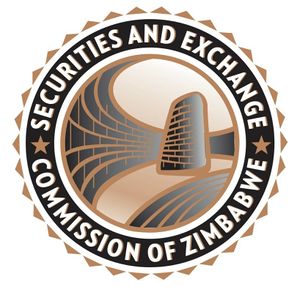Gold miners urged to exploit strong global prices
MINES and Mining Development Minister, Winston Chitando, has challenged gold miners to increase production by leveraging bullion’s favourable prices on the international markets.
Gold is Zimbabwe’s single largest export earner, averaging US$3 billion annually over the past few years. From next year, the yellow metal is expected to earn the country at least US$4 billion.
The mining industry as a whole, is one of the major economic centrepieces, accounting for at least 75 percent of the national total exports.
Officiating at the 2022 second gold mobilisation send-off workshop in Harare yesterday, he said the global demand for the yellow metal was on the increase as the world is turning to gold as a safer haven asset to protect from economic and geo-political issues.
Due to the geo-political issues the world is experiencing, most commodity prices on the international market have in recent years remained depressed, ultimately adversely affecting production of minerals such as those in the Platinum Group Metals (PGMs).
MINES and Mining Development Minister, Winston Chitando
“We send off this dedicated team on a crucial mission, which is mobilising gold and ensuring compliance within our nation’s gold mining sector.
The global demand for gold is on the increase as the world is turning to gold as a safer haven asset to protect from economic and geo-political issues.
“This has seen the price of gold increase from about US$1 900 per ounce in September 2023 to the current price of US$2 500.
“It is absolutely important as a country that we maximise on volume and also on the unit price at a time when market prices for other mineral commodities are subdued.
“You have seen platinum, lithium and almost all other commodity prices subdued, but gold is on the increase.
“It is important that we maximise on the volume which comes,” said Minister Chitando.
Just like the previous exercises, the 2024 second gold mobilisation initiative is being conducted in all the country’s eight gold-mining provinces.
The gold mobilisation teams comprise officials from different Government departments and agencies, among them the Zimbabwe Republic Police, Fidelity Gold Refinery (FGR), Environmental Management Agency and the Zimbabwe Revenue Authority (Zimra), among others.
Zimbabwe Revenue Authority (ZIMRA)
Minister Chitando said gold had long been a source of wealth and prosperity for Zimbabwe and thus the metal holds immense potential to drive economic growth, create jobs and improve the lives of citizens as the country journeys towards Vision 2030 of an upper middle-income society.
“However, the illegal extraction and trade of gold undermines our efforts to achieve these benefits for the people of Zimbabwe.
“We are here to ensure that what is mined is traded through the correct channels.
“As you may be aware, our currency is anchored on gold and hence the need to ensure that all gold trades in this country should be done with FGR — our sole gold exporter,” he said.
“Gold mobilisation exercise has proved to be a successful initiative. You know, each time we have this initiative, the feedback and the impact on the ground is always positive.
“At times, we feel that we should have this almost every other month because the outcome is very positive.”
The gold sector remains strategic to Zimbabwe’s national economic development due to its contribution. Last year, Zimbabwe produced 30,1 tonnes of gold and this year Minister Chitando said the Government is targeting 35 tonnes, a record high, the country achieved in 2022.
“For the year 2023, gold deliveries to FGR stood at 30,1 tonnes. For the year 2024, gold deliveries target is 35 tonnes.
“The key to realising this target is the plugging of leakages to side markets, which are a hindrance to the development that we all aspire to achieve,” he said.
The first eight months of this year saw gold deliveries reaching 20,7 tonnes compared to 19,3 tonnes in the corresponding period in 2023.
“We are talking of a 7 percent increase so we need much more than that.
It is imperative to note that in 2024, the large scale miners delivered 8,5 tonnes of gold to Fidelity against 7,7 tonnes in 2023 — representing a 10,4 percent increase.
“For the small-scale miners, gold deliveries increased from 11,7 tonnes in 2023 to 12,1 tonnes in 2024, reflecting a 3,4 percent increase.
“That is very small considering the huge increase in the price of gold on the international market from US$1 900 per ounce in September 2023 to US$2,500,” said Minister Chitando.
Gold output by artisanal and small-scale miners, last month spiked by 50 percent to 2,4 tonnes spurred by the recent removal of the value added tax on gold deliveries.
The tax was scrapped through Statutory Instrument (SI) 105 of 2024 following a stakeholder engagement between the Government and players in the mining industry in July.
Large scale gold mining
Large-scale producers in August also improved production to 1 000 kgs slightly below one tonne.
Traditionally, artisanal and small-scale miners deliver at least 60 percent of the country’s gold output.
Overall, gold deliveries in August increased by 36 percent to 3,4 tonnes compared to 2,5 tonnes in July this year.
And through the ongoing gold mobilisation efforts, Minister Chitando said, Zimbabwe is on track to ramp up deliveries and improve the much-needed taxes and royalties to the fiscus.-chrocile











